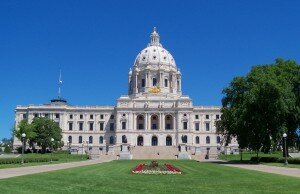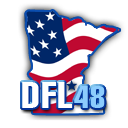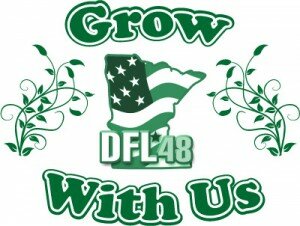Grow with Us Plant Sale!
Get all of your garden needs and help support DFL48! This year, we’re offering you plant cards at both Gerten’s Greenhouses and Garden Center in Inver Grove Heights and Wagner’s Greenhouse in Minneapolis and Bloomington.
Tweets by @DFL48
5
2015 Legislative Session begins Jan. 6
 The 2015 Legislative Session gets underway Tuesday, Jan. 6 at noon.
The 2015 Legislative Session gets underway Tuesday, Jan. 6 at noon.
A hot topic this session will be transportation and transit funding.
Minnesota has the fifth-largest highway system in the U.S. There are more than 14,000 miles of state, county and township roads. Minnesota has more than 20,000 bridges. The Minnesota Department of Transportation (MnDOT) and local governments spend more than $5 billion on roads and mass transit systems.
Where the money comes from:
- $860 million from a 28.5 cent-per-gallon gas tax
- $624 million from vehicle registration tax
- $359 million from vehicle sales tax
- $80 million from other sources
How the 2013 $1.9 billion transportation state budget (and $721 million from the federal government) was spent:
- $143 million for transit
- $700 million for maintenance
- $1.1 billion in new construction
Here’s what you need to know [information from articles in the Pioneer Press and Star Tribune]:
- Minnesota’s gas tax has not been increased since 2008 (the year after the 35W bridge collapse).
- Prior to that, the gas tax hadn’t been increased for 20 years.
- Since 2008, gas prices have dropped, people are spending less on gas because of fuel-efficient cars and people are driving less.
- The federal gas tax has not increased since 1993.
- Half of the state highway pavement is 50 years old. Almost 9 percent of the highway pavement is “structurally deficient.”
- The state’s pavement ranks 37th in the nation; about 7 percent are in poor condition.
- One-third of state bridges are more than 50 years old and 1,200 are structurally deficient.”
- Transit ridership is growing, and system operators need reliable funding sources to upgrade bus fleets, continue building out metro bus and rail services to deliver workers to jobs and provide transit options for aging rural populations.
- Federal transportation dollars (about $721 million) are drying up.
- Congestion and poor infrastructure cost Minnesota consumers about $800 per year in wasted fuel costs and time.
- Minnesota’s population is expected to grow by 1 million in the next 15 years.
- Truck freight is expected to increase by 30 percent.
What leaders are saying:
- MnDOT Commissioner Charlie Zelle: It will take $6 billion over the next 10 years just for state roads and bridges – $4 billion to preserve what we have and $2 billion for improvements. That does not take into account money needed for bus and transit systems.
- MnDOT will generate 15 percent of the new revenue needed by making its operations more efficient.
- Gov. Mark Dayton:
- Is considering a 6.5 percent sales tax on gas at the wholesale level to raise an estimated $5.9 billion over the next 10 years.
- Almost $4 billion would be used for state roads and bridges with the remaining funding being split between cities and counties.
- The Governor may also propose a half-cent sales tax increase in the seven-county metropolitan area to raise $235 million a year for bus and rail improvement.
- Gov. Dayton is also considering an increase in tab fees.
- He may put forward a proposal to increasing funding for rural transit by $120 million over the next 10 years.
- Is considering a 6.5 percent sales tax on gas at the wholesale level to raise an estimated $5.9 billion over the next 10 years.
- Sen. Scott Dibble (DFL-Minneapolis), chair of the Senate Transportation Committee, expects the Senate will pass a gas tax increase and metro sales tax increase for transit.
- Sen. John Pederson (R-St. Cloud), the ranking Republican on the Senate Transportation Committee, said his caucus might be open to an increase in the gas tax if there are cuts to other taxes, such as the statewide property tax or the corporate income tax.
- Rep. Tim Kelly (R-Red Wing), chair of the House Transportation Committee, said Republicans need to figure out how much is needed and will try to figure out a way to pay for the transportation investment without raising taxes.
- Speaker Kurt Daudt has said that a gas tax is not off the table, but he’s also said he thinks lawmakers can find the money needed by making transportation a “higher priority” in the state budget.
- The two largest expenditures in the state budget are education and health care. If Republicans refuse to increase taxes to address Minnesota’s failing road system or transit needs, the money could very well come out of our classrooms or nursing homes.
2014 Minnesota legislative issues · 2014 Minnesota legislative session
 DFL48
DFL48
